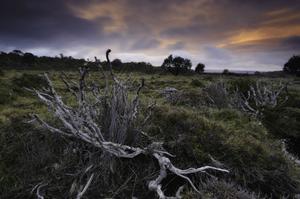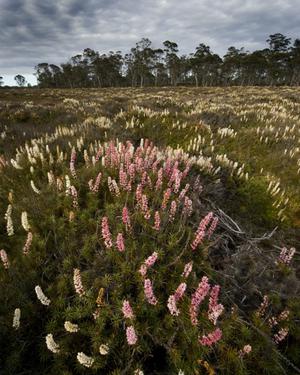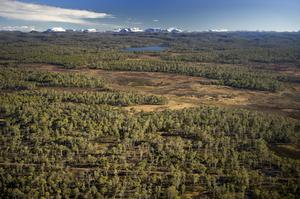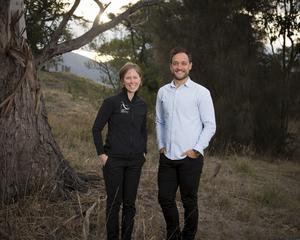When a handful of volunteers gathered in 2001 no one could have envisaged the Tasmanian Land Conservancy's extraordinary trajectory.
Jane Hutchinson was one of the original core group that met in a Hobart cafe. A practicing lawyer at the time, she helped establish the TLC's constitutional and financial frameworks in her spare time.
By 2011 she had been appointed the organisation's CEO.
After seven years in the role, Jane is moving on to new challenges. So now is the ideal time to reflect on her career to date and the rise of this influential organisation.

Skullbone Plains Reserve. Photo by Hillary Younger.
What is the TLC?
The not-for-profit, apolitical and community-driven organisation raises funds to protect land and rare ecosystems. It does so by purchasing and managing land across Tasmania and it's one of the state's largest private landholders.
Back in 2001, the TLC had $50 in the bank. Today, they’re a $35 million organisation, protecting 65,000 hectares; land alive with threatened plants and animals.
An idyllic childhood
Hutchinson's love of her island homedates back to childhood. She grew up in a semi-rural part of Tasmania, south of Hobart in Kettering.
We enjoyed lots of fishing, climbing trees and time at the beach. As kids we’d catch Flathead off the rocks in front of our place. We’d put three or four hooks on, and we’d have that many Flathead on each line. It was so bountiful. We didn’t realise how fortunate we were.
She says her father’s influence instilled a love of nature in her at an early age.
“My Dad was a bird watcher and his father before him. He taught us how rare certain birds were and how we must look after them.”
From law to land conservation

Skullbone Plains Reserve. Photo by Matt Newton
Jane graduated from the University of Tasmania with a combined Bachelor of Science and Laws degree with Honours in Law in 1998. She became involved with the TLC only a few years later, and has become well known in her home state as an eco-crusader.
In 2016 she was named Tasmania’s Australian of the Year.
Jane credits UTAS for giving her a solid foundation from which to pursue her legal career and her passion for nature conservation. Exposure to internationally regarded academic leaders in law and environmental thought were critical in shaping her future both in public and private life.
Protecting plants and animals
During Jane Hutchinson's time as CEO the Tasmanian Land Conservancy has protected some 10,000 more hectares of land, home to animals that exist nowhere else on the planet. She has championed programs that protect endangered species such as the wedge-tailed eagle and the Tasmanian devil. The aim is for this island to become a global leader in nature conservation.
As Jane explains, one of the great challenges the world faces today is a loss of biodiversity.
Biodiversity ensures we have clean air and water, healthy soils and productive crops. We need biodiversity and functional ecosystems that are resilient to change. Private land is critically important because a lot of the diversity that exists in Tasmania is only on private land.
The nitty-gritty
The TLC works closely with landowners to help them protect and manage their property. They also have what’s known as a "revolving fund" where the TLC will purchase then protect land with a conservation covenant, before selling it on to owners who are committed to upholding its natural values. In doing so, the funds are used to reinvest in the next piece of land.

Skullbone Plains Reserve was the first reserve secured under Hutchinson’s appointment as CEO. Photo by Matt Newton
We’re facing increasing threats here - from climate change to land clearing for residential development. More people are coming to Tasmania, which can be a great thing but it puts extra pressure on our natural resources. We really need to ensure future generations can enjoy what we have.
Looking ahead
As impressive these achievements are, Jane's hopes for the future are even greater. She wants to see the emergence something similar to carbon trading but for biodiversity, where a company or individual can assess their impact.
"They can work out what their impact per unit is and then buy on the market from organisations like ours or from private land owners that are doing nature conservation work."
And her vision for Tasmania is far reaching.

Jane Hutchinson and James Hattam. Photo by Matt Newton.
I don’t think we need to choose between nature and prosperous people, we can have both. At the TLC we've been really focused on making sure the work that we do lasts forever. It’s not short-term, but with a view of hundreds of years.
Jane says she'll be "cheering from the sidelines" as new CEO James Hattam takes up the job.
“It has been an absolute privilege to have worked with so many incredible people to have achieved such important and tangible results for nature conservation. I’m truly excited about the future for the TLC.”
Whatever's next for Jane, there can be no doubt her conservation crusade is far from over.
Want to find out more about studying Law?
Want to find out more about studying Sciences and Engineering?
Words: Alice Hansen
Hero image: Matthew Newton